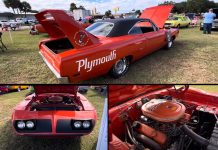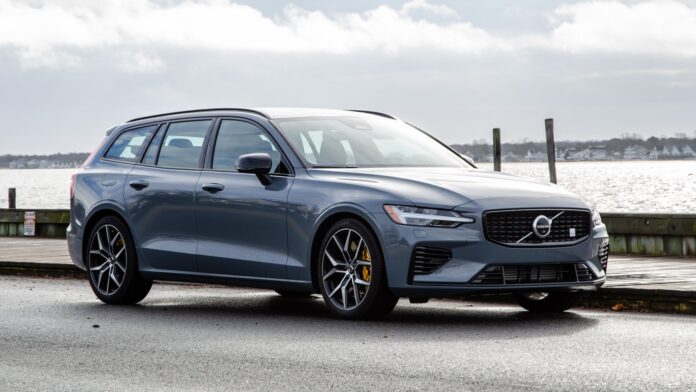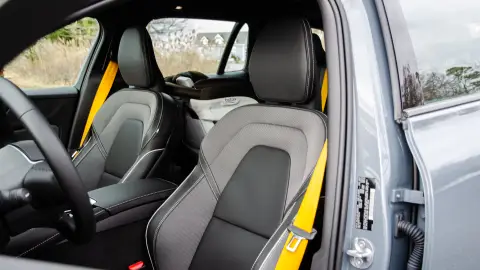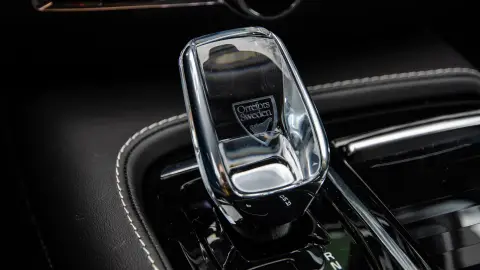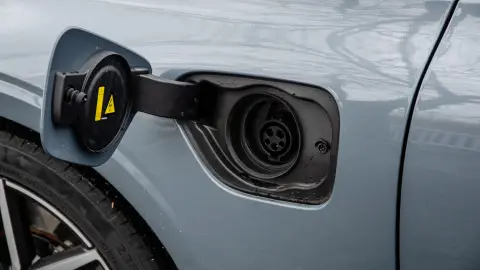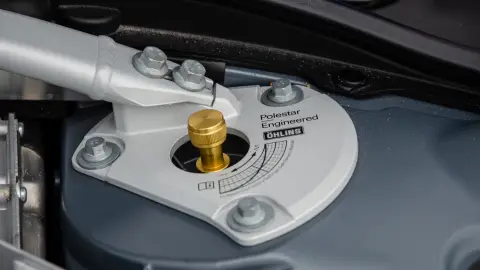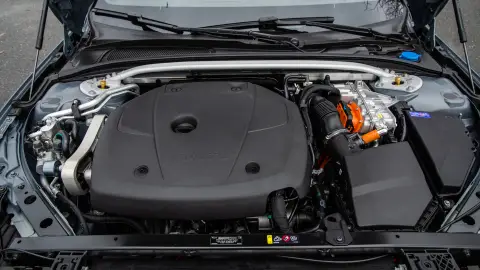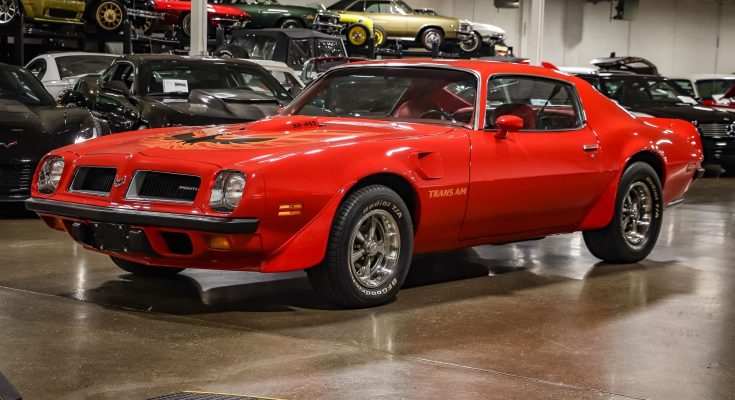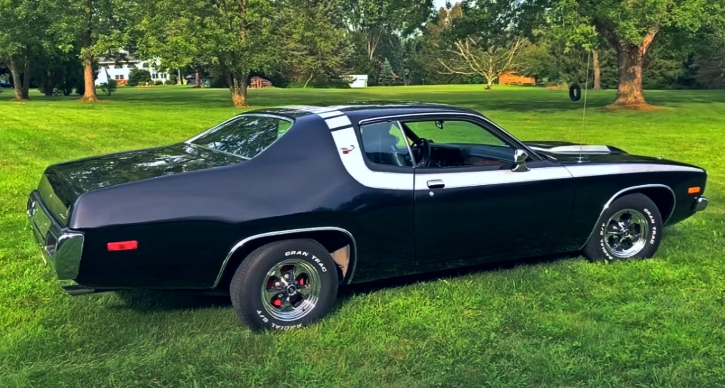Car nerds like me—and probably like you, too—endlessly bemoan the lack of performance wagons in the United States. It has grown tiresome to hear the near-constant complaints from people like myself about SUV-crazy America and how we should all be driving brown, diesel, manual wagons instead. However, a week in the 2023 Volvo V60 Recharge reminded me of why sporty wagons are truly the perfect car configuration and why we won’t shut up about them.
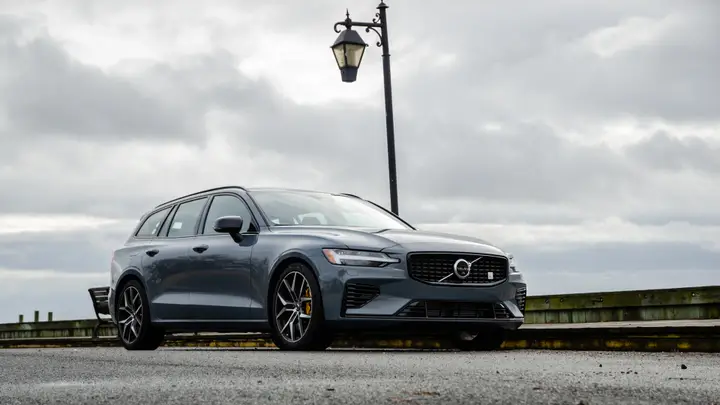
The Polestar-tuned V60 isn’t your typical sporty wagon and it’s a far cry from the classic brown wagons enthusiasts dream of. Instead, it’s an all-wheel drive, plug-in hybrid with gobs of power and the ability to drive on pure electricity alone. And it’s such a compelling package that it actually frustrates me that there aren’t more others like it.
2023 Volvo V60 Recharge Specs
- Base price (T8 Polestar Engineered as tested): $71,845 ($72,540)
- Powertrain: 2.0-liter turbocharged four-cylinder hybrid | rear axle electric motor | 8-speed automatic | all-wheel drive
- Horsepower: 455
- Torque: 523 lb-ft
- Seating capacity: 5
- Curb weight: 4,522 pounds
- Cargo space: 23 cubic feet behind second row | 60.5 cubic feet behind second row
- Fuel economy: 28 mpg city | 33 mph highway| 30 mpg combined | 74 mpge
- Electric range: 41 miles
- Quick take: A fantastic and unique performance car that can also double as a practical family car.
- Score: 8.5/10
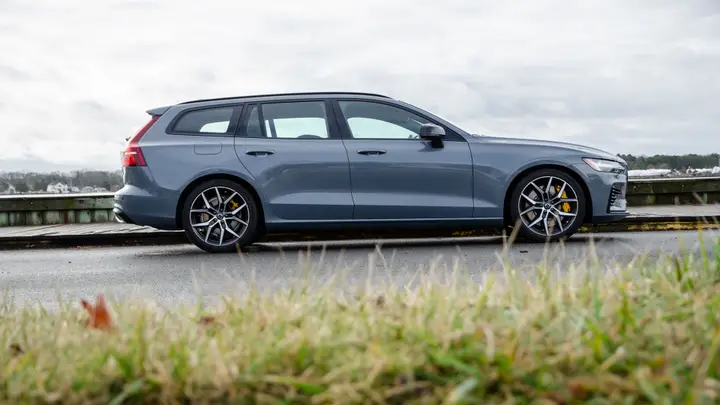
The Basics
The Volvo V60 is the long-roof version of the S60 sedan and the smaller of Volvo’s two wagons. The T8 Polestar is the most expensive, highest-performance version of the V60 and has been tickled by Polestar, Volvo’s performance subdivision that has since ventured off to build pure EVs on its own. While the Polestar name might not carry the same weight as Mercedes-AMG or BMW M, there’s no denying the V60’s performance. There’s some genuinely impressive hardware under its finely chiseled exterior that will help it take on some of the best luxury performance cars in the world.
You wouldn’t know that it has such performance potential from looking at it, though. There are a few visual hints that the V60 T8 Polestar is something more than just a Volvo wagon, such as the sportier wheels, gold brake calipers, and gold wheel stem caps. But for the most part, it’s just a sharp-looking, handsome sleeper that can absolutely rip off the line at stoplights. And then when you pull back into your driveway, it just looks like an expensive, sophisticated Volvo, one your in-laws won’t criticize you for buying. Sleeper styling aside, the V60 is an objectively gorgeous wagon, with sharp edges, perfect proportions, and stunning “Thor’s hammer” headlights. My inner comic book nerd loves that last bit.
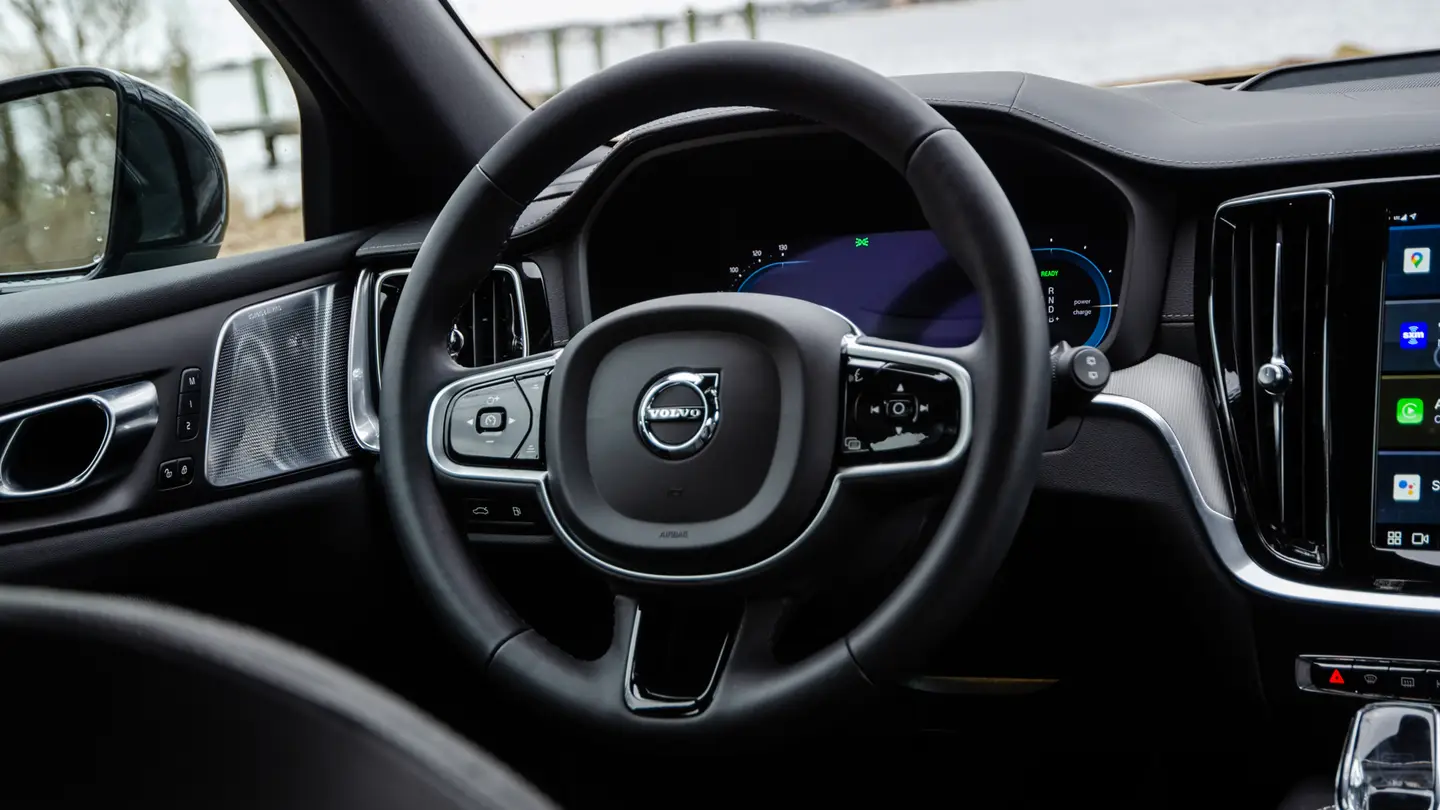
Inside, it’s very typical Volvo. The seats are lovely to sit in and lovely to look at thanks to heavy bolstering and a cool blend of leather and fabric. The dash and infotainment design are essentially the same as they are in every other Volvo, which is both good and bad. Good because it’s a handsome, expensive-looking and feeling cabin but it’s also a bit boring now. There also isn’t any other interior option for the Polestar model other than black with metal-like trim. Volvo makes lovely, light-colored cabins with gorgeous wood trims in other models that I’d love to see here. I guess they don’t fit with the Polestar’s sporty nature but it’d be nice to have options.
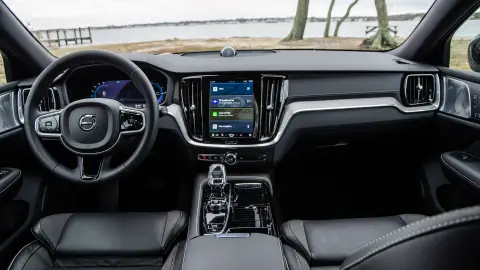
Where Volvo does give you options, though, is through the powertrain, which is the absolute highlight of the V60 Polestar. It’s essentially three different cars in one. Up front is a 2.0-liter turbocharged four-cylinder engine that’s paired with an electric motor and an eight-speed automatic transmission to drive the front wheels. At the rear axle, there’s an additional electric motor that drives the back wheels independently. When they’re all in use, software combines it all to make it feel like one seamless powertrain making 455 horsepower and 523 lb-ft of torque. You can use it in three different ways; as a normal hybrid, as a pure electric vehicle, or as a high-performance sport wagon.
Driving the Volvo V60 T8 Polestar
You know the Volvo V60 Polestar is going to be a unique experience from the moment you start it. It comes to life with the clockwise twist of a starter knob mounted by the Orrefors crystal shifter. It initially starts in pure EV mode, as long as there’s enough battery to do so. Pressing a gear logo on the screen brings up a simple-to-navigate powertrain menu which lets you choose between drive modes, whether or not you’d like the gas engine to operate, and whether to use, hold, or charge up the battery.
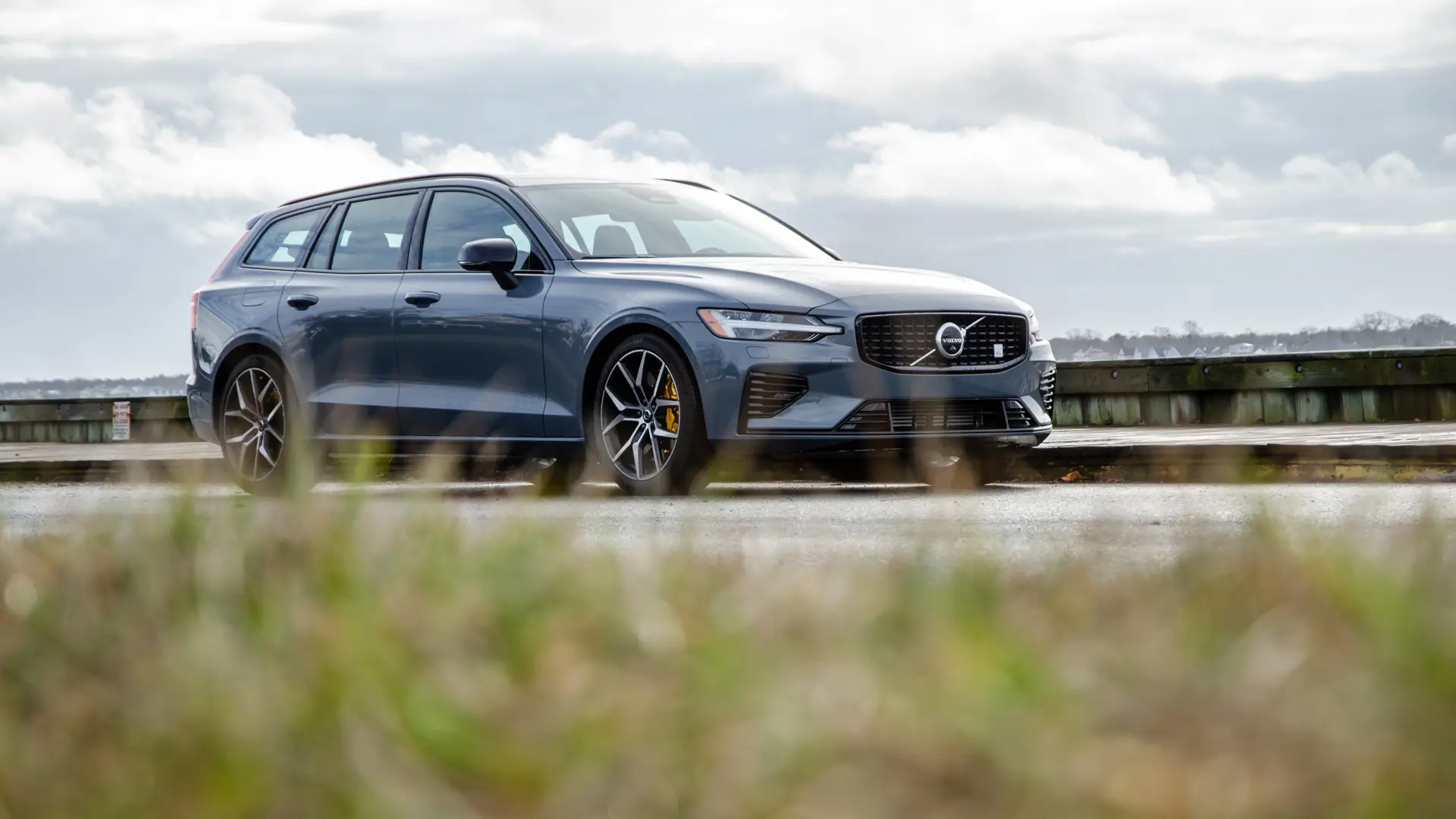
Choosing your drive mode is actually a lot of fun. You sort of get to choose which kind of car you want to drive each and every time you get in it. It’s like a choose-your-own-adventure game that you get to play over again each time you set off. Once you choose, the V60 drives pretty calmly. Steering is light but accurate, which makes driving around town easy and effortless, even if it is completely lifeless. Even in the sportier Polestar drive mode, the steering weights up a bit more but is still numb.
What isn’t lifeless, though, is its suspension. Holy moly, this suspension is good. While pretty much every performance car in the V60 Polestar’s price range comes with adaptive dampers, Volvo makes them all look pedestrian, packing manually adjustable Öhlins coilovers as-standard. The damping can be adjusted with knobs at the top of the shock towers and Volvo provides recommended settings for different comfort and performance levels. You can see the front suspension knobs under the hood (which is awesome) but the rear ones require the back of the car to be jacked up. Not wanting to mess with a manufacturer’s press car, I left the suspension as it was and found it to be firm but also able to round out bumps incredibly well. It had the sort of firm control and compliance that only the highest quality suspension has and it’s one of the best parts of the car.
There are four different powertrain modes: Hybrid (the car decides when to use the engine and motor), Pure (purely electric), Constant AWD (keeps the engine and motor running together but not max power), and Polestar (max power, all the time). Interestingly, every mode proved to be useful. Hybrid was great for just running around town, as it cleverly used the engine and electric motor to make the most out of the least amount of fuel. Pure was great for short trips when I didn’t want to run the engine. Constant AWD was great for when I wanted to drive calmly but recharge the battery or keep the heat on while parked, and Polestar was obviously the most fun.
In Polestar mode, the V60 feels much quicker than the 4.3 seconds Volvo claims it takes to hit 60 mph. The instant shove of its electric motors fills in the gas engine’s turbo lag and provides instant, seamless thrust. It’s not quite as quick as something like a similarly-priced BMW M3 Competition but it’s close and, if anything, feels more responsive due to its electric motors. However, the engine doesn’t make a particularly good noise—it’s sort of gravely and coarse—but it’s a fun powertrain to use nonetheless.
The Highs and Lows
There’s a lot to like about the Volvo V60 T8 Polestar. It looks great, it’s sports car-quick, it handles well, and it has SUV-like storage. It’s also surprisingly efficient in its hybrid mode—I averaged around 28 mpg which is pretty damn good for a 455-hp performance car—and can run on pure electricity, essentially making it an electric vehicle for short periods of time. Hell, it can even tow 2,000 pounds, so you can slap a trailer on the back if you need.
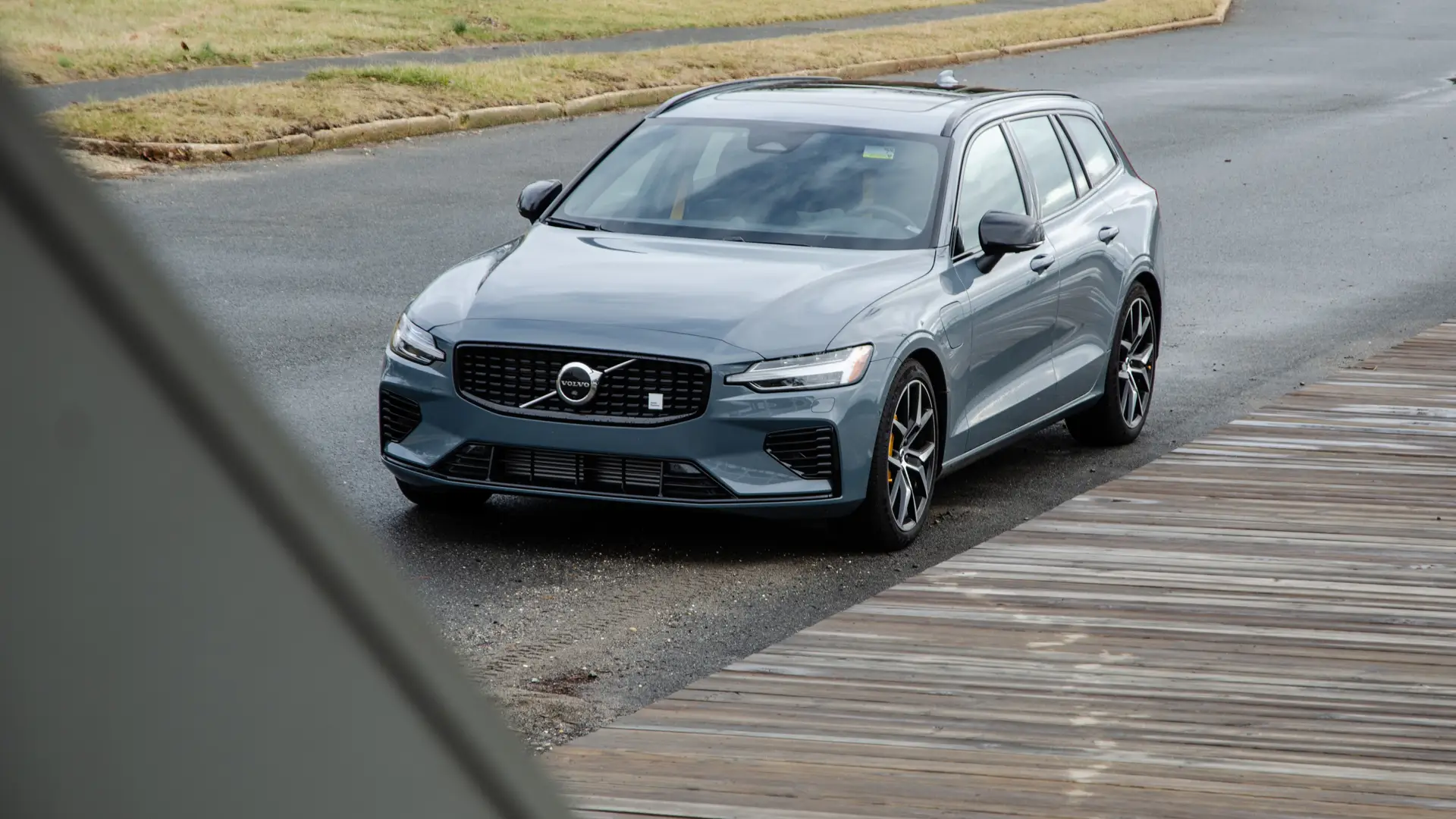
However, there were also some things I didn’t love. While it handles well enough and has great suspension, it understeers too much. Although, I think the Continentals it came on might have been the culprit, and a set of Michelin Pilot Sport 4S tires could make a big difference. Its infotainment user interface is also too fussy overall and takes too long to load once the car is started. That might not sound like a big deal but when it’s 10 degrees Fahrenheit outside and you’re trying to adjust the touchscreen-based heat controls, that 10-second load time feels like an eternity. Also, the digital gauges are boring and lack customization, which isn’t necessarily a problem but competitors like Audi, Mercedes, and Genesis offer way more interesting gauges.
Volvo V60 T8 Polestar Features, Options, and Competition
There really aren’t any options to speak of. The Volvo V60 T8 Polestar is the highest trim level V60 and there are only two options; color and the protection package (wheel nut covers, rubber floor mats, a plastic trunk liner, and a stainless steel rear bumper protector). My test car wore the optional $675 Thunder Grey paint. Unfortunately, there are only four color options available, all of which are monochromatic, and only black is standard. There are a lot of standard features, though, including a surround-view camera, heated seats and steering wheel, and the Öhlins suspension.
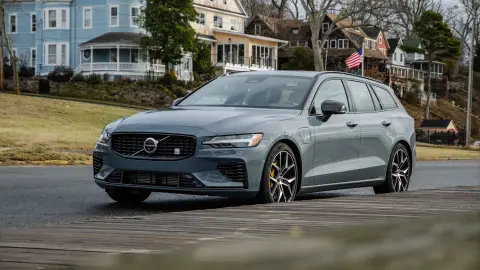
It doesn’t really have much direct competition, though. The closest competitor is probably the Audi RS5 Sportback because it has similar power (444 hp), a similar price, and has a liftback tailgate, so it’s more practical than a traditional sedan. However, it’s still less practical than the V60 Polestar wagon and it’s not a hybrid. The Porsche Panamera E-Hybrid Sport Turismo is a performance hybrid but it’s much more powerful and costs $113,000. The BMW M3 Competition is similarly priced, too, but it’s more powerful, isn’t a hybrid, and is only a sedan. The wagon version of that car, the M3 Touring, will be offered in Europe soon but won’t be coming to the U.S. market.
If I were to spec a Volvo V60 T8 Polestar, I’d get it in that menacing black. Black with the gold Polestar calipers would look awesome.
Range, Charging, and Efficiency
There was no readout for its miles-per-kWh in electric mode, so I couldn’t measure its EV efficiency, but its range readout was surprisingly accurate. When I decided to truly test its electric range, it had 23 miles left, according to the trip computer. I drove about 11 miles home on the highway, at around 70 mph, and still had 11 miles of range left, which would have given me a total of 22 miles of the originally claimed 23. So I can see it genuinely getting the 40 miles of total range Volvo claims with a full battery and careful driving.

You can charge the V60 Polestar like a traditional EV, as it’s a plug-in hybrid, but I never had to. When the battery got low, I just flipped the “charge battery” setting on, which takes some of the engine power (in any mode with the engine on) to charge the battery. It was able to recharge the 18.8-kWh battery to full pretty quickly, so I always had juice. Charging it at home would be more efficient but it’s nice to have options.
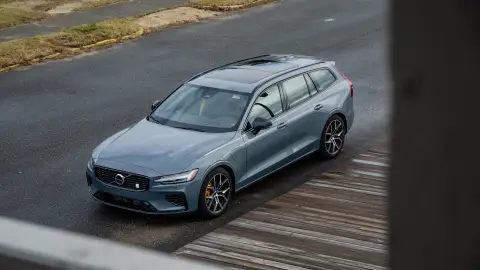
Sustainability
At the moment, there’s nothing particularly special about the V60 Polstar’s sustainability. It does use a lithium ion battery pack, albeit a small one, so there is some mining of precious materials to make one. However, Volvo is working on becoming an environmentally sustainable company by 2040 and making efforts to use renewable energy to manufacture its cars, working on creating a circular economy of recycled raw materials.
Value and Verdict
At $72,540, the 2023 Volvo V60 T8 Polestar might seem expensive, and objectively it is. However, I feel like you get your money’s worth. Few cars offer the sort of versatility that it provides. Not only is it fun and practical but it’s also three different cars in one; a performance car, a sensible hybrid, and a pure electric car. And it can be all three at the same drive, at any given time, depending on the situation. It also has all the cabin tech you could want, a great Bowers & Wilkins sound system, and a premium enough cabin to make your money feel well spent.
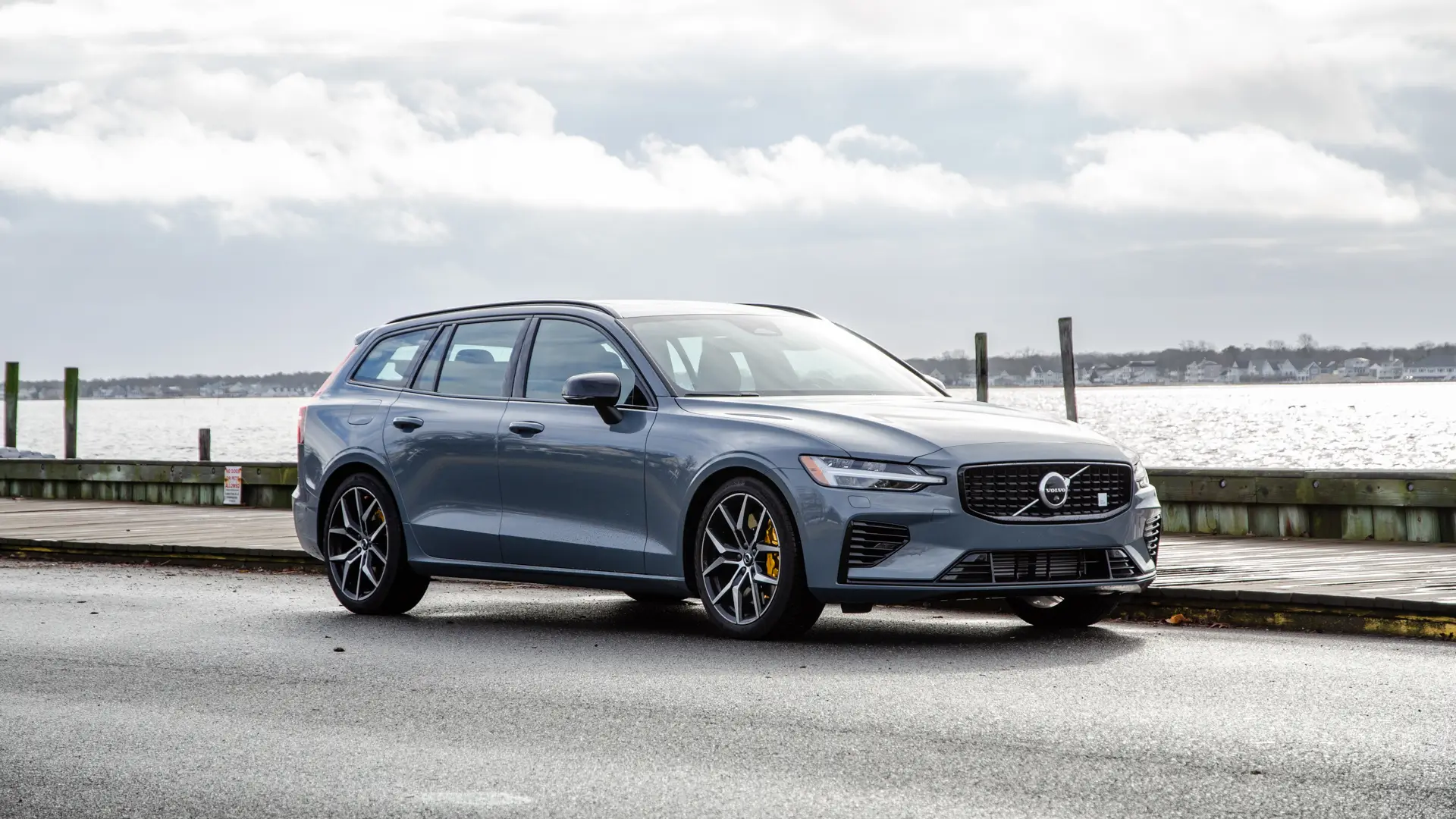
The Volvo V60 Polestar isn’t a perfect car but it’s such a compelling package that I can’t help but want one. In its price range, there are much quicker performance sedans and sports cars that handle better. There are also hybrid luxury SUVs that are more practical. But there’s nothing that combines all of those traits into a package that looks as great as the V60 Polestar. As a sports car lover with a small family, I can’t think of a better all-around daily driver available in the U.S. market. Why doesn’t every brand make one of these?
Update: 3/1/23 11:50 a.m. ET: The original version of this review quoted outdated horsepower, torque, and battery capacity figures. The article has been changed to correct this.



